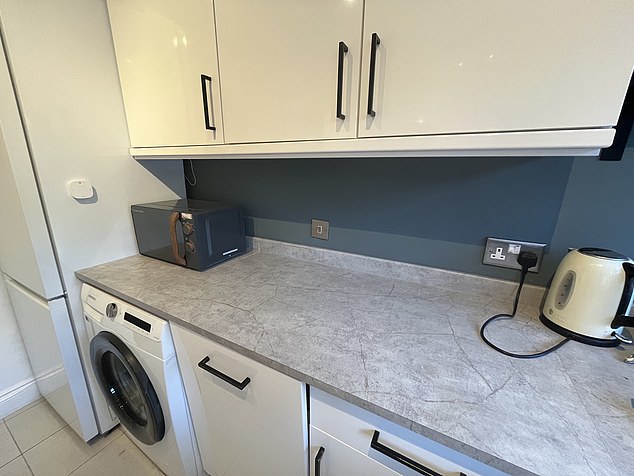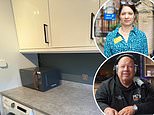I recently moved into a new home. The kitchen worktops are quartz – essentially fake marble – which first of all isn’t to my taste.
But more concerningly, quartz has now been reported to cause health problems in kitchen fitters who have handled it.
Re-doing the kitchen isn’t a priority so I was planning to change the worktops in a couple of years’ time.
But given these concerns should I look at doing it sooner? I’ve seen that people are calling for the material to be banned, which it already has been in Australia.
Would it be difficult to find a tradesperson willing to remove it? I imagine it would be tricky to dispose of.

Jane Denton, of This is Money, replies: Quartz is artificial stone, also known as engineered or reconstituted stone.
Quartz kitchen worktops have become popular in the last two decades or so because of their durability and appearance.
They are typically made from 90 per cent ground quartz and 10 per cent resins and pigments.
While being processed into its final worktop form, it has been reported that the stone releases harmful particles of fine silica dust into the air.
Once inhaled into the lungs, the particles can build up, causing internal scarring and inflammation of the lungs, known as silicosis.
In July 2024, Australia banned the use, supply and manufacture of engineered stone.
According to reports, cases of artificial stone silicosis have been reported in various parts of the globe since 2010. Cases in Britain have also now been identified.
A report published in the Thorax medical journal in August 2024 called Artificial stone silicosis: a UK case series, said: ‘UK cases are likely to increase, with urgent action needed to identify cases and enforce regulations.’
I have asked a medical expert and a trades expert for their thoughts on your question.

Fix Radio host and home improvement expert Clive Holland, says: Quartz worktops can be hazardous to workers due to their high levels of crystalline silica, which can lead to silicosis – a deadly and incurable lung disease.
However, once installed, these surfaces pose no threat unless disturbed by re-cutting, drilling, or similar activities.
A trained professional can safely remove a quartz worktop if proper precautions and protective equipment are used.
Alternatively, the worktop can be left in place and covered with marble or granite overlays.
Granite overlays, in particular, are an excellent choice for kitchens and bathrooms.
They are durable, resistant to damage and spills, and easy to maintain. This method ensures that the quartz worktop remains sealed beneath, eliminating any potential risk from silica exposure.
This approach not only enhances the appearance of the space, but also provides a practical and safe solution.
By opting for overlays, homeowners can enjoy the benefits of a durable, stylish surface without the hazards associated with disturbing quartz.
It’s a smart and effective option for both safety and functionality.

Dr Johanna Feary, a consultant in occupational lung disease at Royal Brompton Hospital, says: Quartz worktops are known by many different names but they are basically all forms of engineered or ‘artificial’ stone made from crushed rocks mixed together with resins and pigments to provide the desired finish. They are highly practical, resilient and attractive materials.
However, a key feature is that they can contain very high levels, over 90 per cent, of silica compared with, for example, marble which contains almost no silica. This means that when the quartz worktops are cut or polished the dust that is produced contains very high levels of silica.
If enough precautions are not taken to protect workers from this dust then they will breathe in high amounts of silica dust. If someone repeatedly breathes in silica dust it can lead to silicosis.
This is an incurable and often progressive disease which causes hardening of the lungs.
At first it causes no symptoms so people don’t realise there may be a problem.
If it progresses, symptoms of breathlessness, cough and feeling tired may develop. The first thing people often comment is that they feel more short of breath than they used to, doing things like climbing stairs, going for a brisk walk or kicking a football around with their children. Over time this can progress so they are short of breath walking slowly or taking a shower.
In silicosis, due to these worktops, it is an unusually young group of people who are affected with an average age of just 34 years-old.
It seems that they all worked for companies where the precautions to protect workers from dust were not adequate. Sadly the UK saw the first death this year in a man who was just 28 years old.
The risk is only to tradespeople cutting and polishing the stone and this is almost all done in workshops.
Once the worktops are installed there is no risk to the homeowner. Disposing of it will release very little dust so this should be straightforward if you do decide to replace it.


